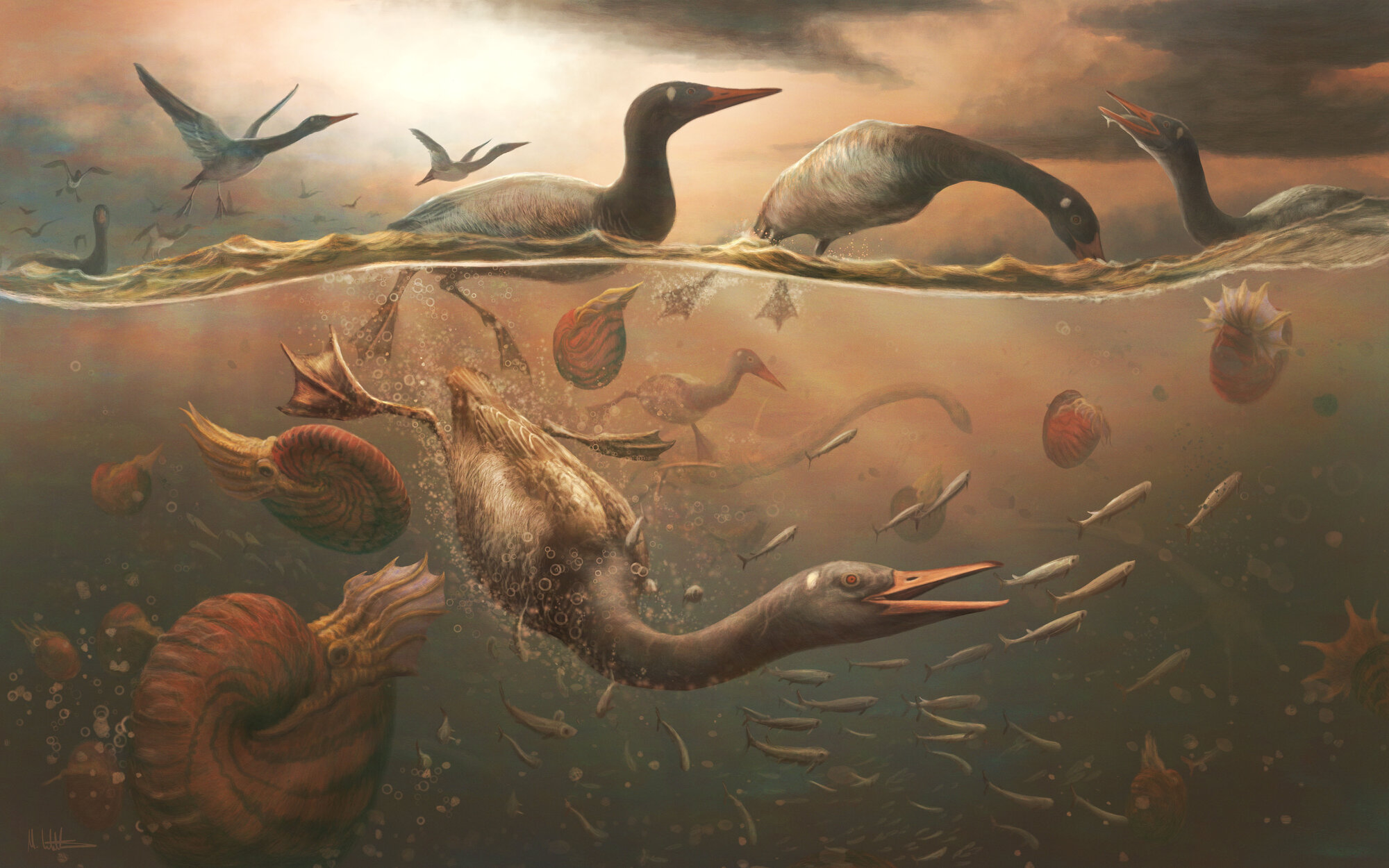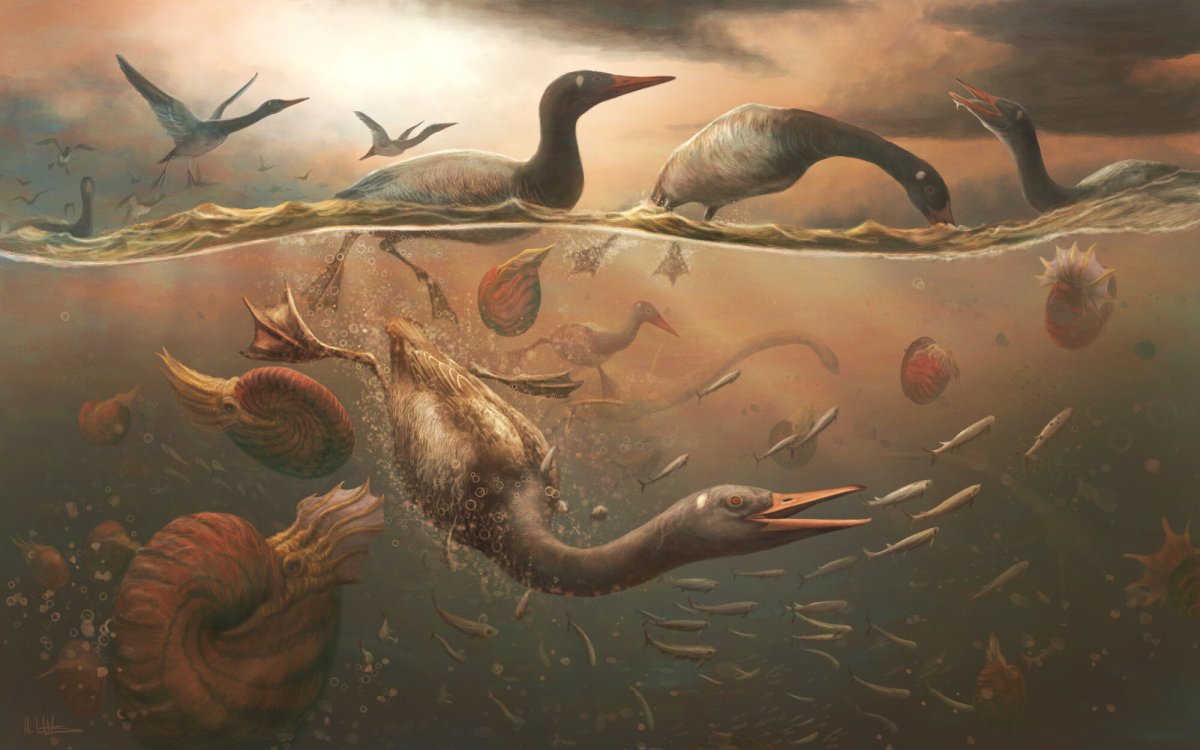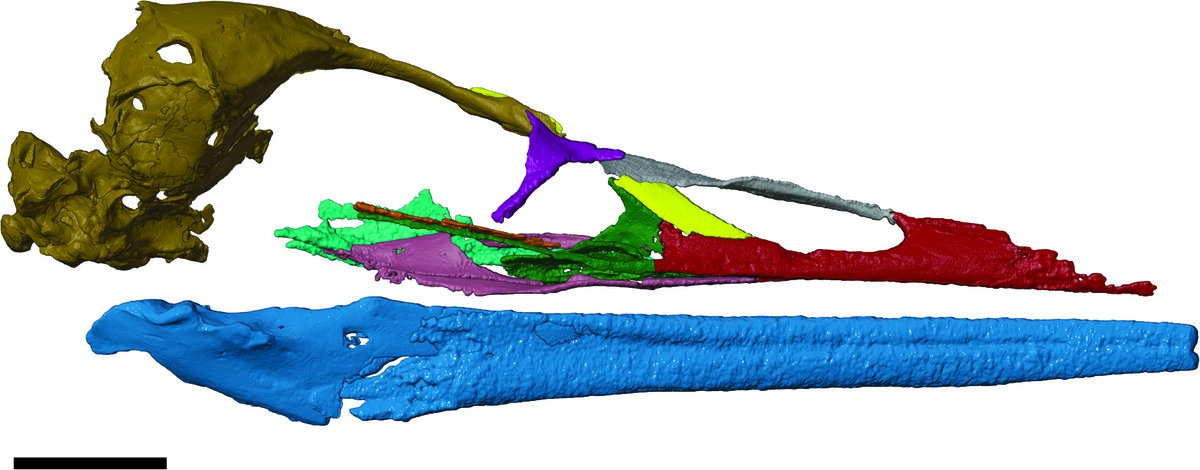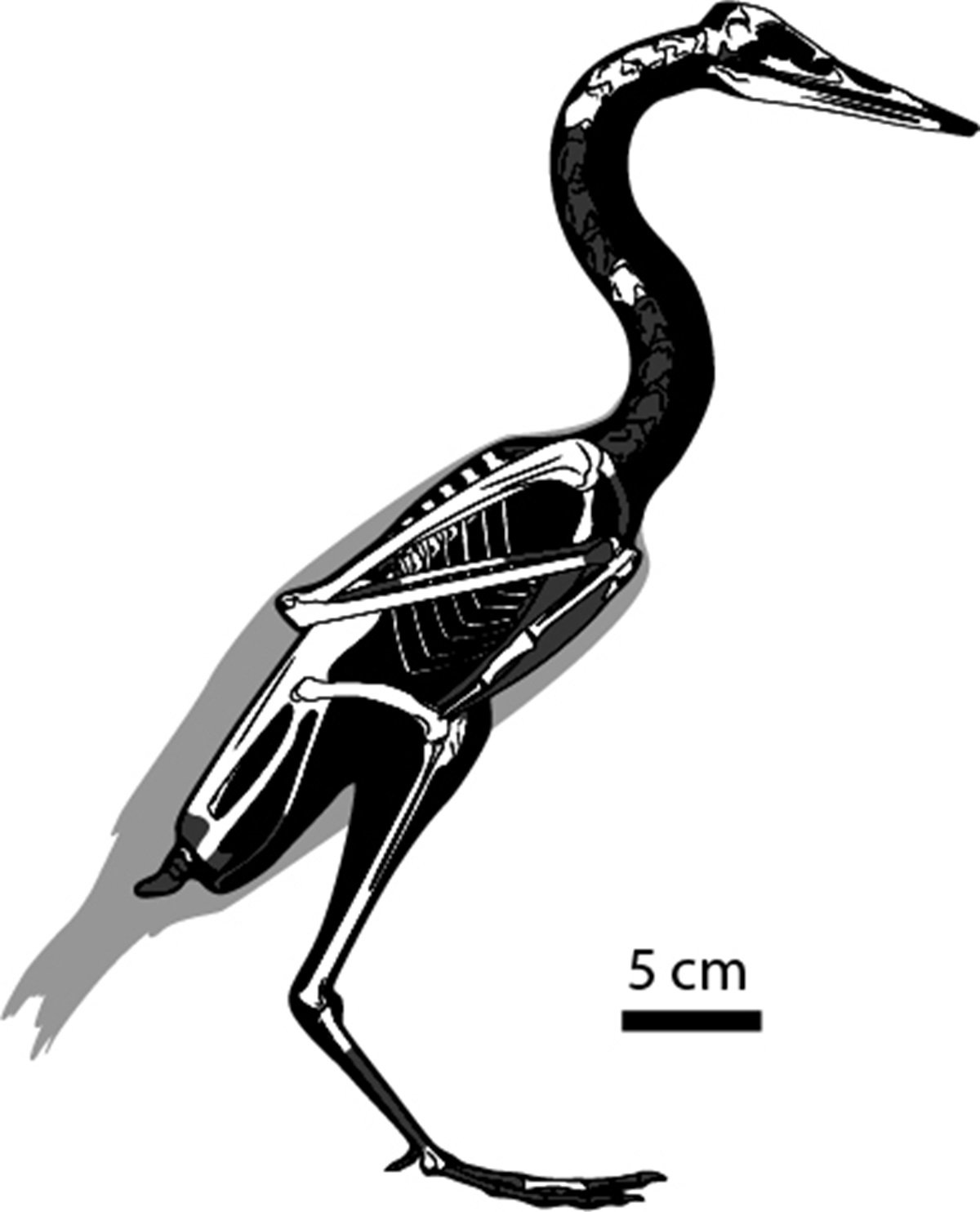
The discovery of a remarkably near-complete fossil skull of the earliest known modern bird may help settle a long-standing debate about the evolutionary history of our feathered friends.
The specimen belongs to a species of extinct bird known as Vegavis iaai, a relative of modern ducks and geese that lived some 69 million years ago—the same time Tyrannosaurus rex was stomping around North America.
Vegavis was first described two decades ago, at which time it was argued to be an early member of the modern birds—but more recent analyses cast doubt on this suggestion.
“Few birds are as likely to start as many arguments among paleontologists as Vegavis,” said paper author and University of the Pacific paleontologist professor Christopher Torres, who undertook the study while based at Ohio University.
“This new fossil is going to help resolve a lot of those arguments. Chief among them: where is Vegavis perched in the bird tree of life?”
The new specimen, recovered from the Antarctic Peninsula in 2011, appears set to lay recent skepticism to rest, with the shape of the skull revealing features that are consistent with modern birds, specifically waterfowl.
Unlike most of today’s waterfowl, however, Vegavis appears to have sported powerful jaw muscles that were used to overcome drag while diving for fish, using its feet for propulsion.

Mark Witton/Ohio University
Part of the reason why Vegavis‘ place in the tree of life has been so hard to place is that examples of modern birds are extraordinarily rare before the end-Cretaceous extinction that famously killed off the non-avian dinosaurs.
In the case of Vegavis, surviving the asteroid impact may have been a matter of location; with Antarctica having served as a refuge thanks to its relative separation at the time.
Based on fossil evidence, it is believed that the Antarctica of 66 million years ago sported a temperate climate with lush vegetation—an ideal setting for the development of the ancestors of ducks and geese.
“This fossil underscores that Antarctica has much to tell us about the earliest stages of modern bird evolution,” said paper co-author and Ohio University paleontologist Professor Patrick O’Connor in a statement.

Joseph Groenke, Ohio University / Christopher Torres, University of the Pacific

Christopher Torres, University of the Pacific
Birds from elsewhere around the globe that date back to the end of the reign of the non-avian dinosaurs are, the researchers explained, barely recognizable when compared to the birds we are familiar with.
O’Connor explained: “Those few places with any substantial fossil record of Late Cretaceous birds—like Madagascar and Argentina—reveal an aviary of bizarre, now-extinct species with teeth and long bony tails, only distantly related to modern birds.
“Something very different seems to have been happening in the far reaches of the Southern Hemisphere, specifically in Antarctica.”
For this reason, the impression that the Antarctic continent has left on the ecosystems of today is a topic of considerable interest to paleontologists.
As paper co-author and Carnegie Museum of Natural History paleontologist Matthew Lamanna concludes: “Antarctica is in many ways the final frontier for humanity’s understanding of life during the Age of Dinosaurs.”
Do you have a tip on a science story that Newsweek should be covering? Do you have a question about paleontology? Let us know via [email protected].
Reference
Torres, C. R., Clarke, J. A., Groenke, J. R., Lamanna, M. C., MacPhee, R. D. E., Musser, G. M., Roberts, E. M., & O’Connor, P. M. (2025). Cretaceous Antarctic bird skull elucidates early avian ecological diversity. Nature, 638(8049), 146–151. https://doi.org/10.1038/s41586-024-08390-0





